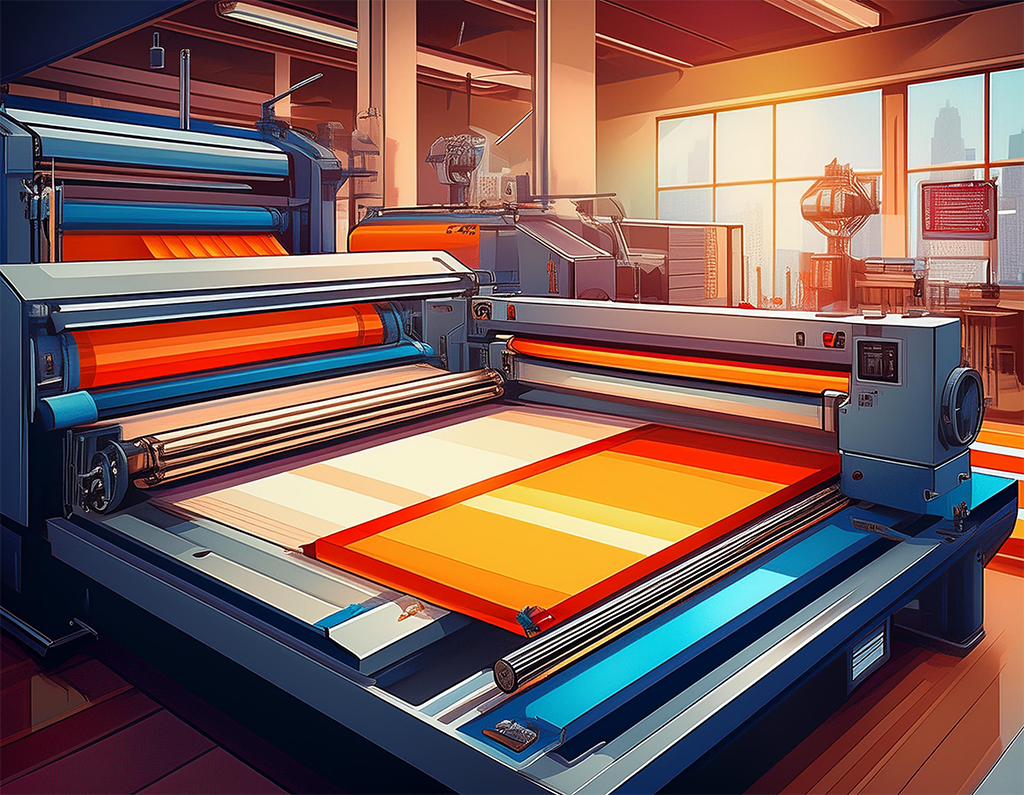Laminating film consists of two layers, a base layer of: Polyester, OPP Polypropylene, Nylon, or Vinyl. An inner adhesive resin layer becomes liquid when it reaches an activating temperature. Many kinds of adhesives are on the market that are applied to the base materials depending on the application.
First, place the material between two sheets of laminating film. The laminating machine melts the adhesive resin layer, which then spreads over the document, hardening as it cools and created a bond between the material and film.
Types of Laminate Machines
- One Sided Laminating
- Two Sided Laminating
- Desktop Laminators
- Wide Format Laminators
Laminating is well know to be one of the best ways to protect a document. The most durable form of laminating is with an overhang that completely surrounds the document for a watertight and airtight seal. Beyond that, there are many methods of laminating.
Laminators can vary in many ways. There exists a large variety of machines. It’s best to work with an expert when deciding what machine & laminate is the best mix. Contact us today!
See article below for an explanation of laminate types.
Types of Films
Narrow Format for Desktop Machines
Standard Laminating Rolls: This film is referred to as “school film” and is available in 1.5 mil or 3 mil thickness. Standard film is a mono polymer film, which means there is one type of adhesive coating the base material. These films tend to have a high operating temperature and are the least expensive films. This is also known as “nap-lam l” which is a trade name for GBC.
Premium Laminating Film: This is a co-polymer film, which has a more aggressive adhesive than mono polymer. It operates at a lower melting temperature. GBC’s brand name for this is “nap-lam ll”. This film is normally available in 1.7, 3, 5 and 10 mil thickness.
Color-Bond Laminating Film: This is a specialty film formulated toner based color copier output. Color copies have fuser oils that allow the toner to adhere to the paper. The Standard mono-polymer and Premium co-polymer films we currently carry will not always work with color copier output. Furthermore, the problem magnifies when customers have applications with heavy toner coverage and very dark colors that lay down a lot of toner on the paper.
Commercial Laminate for High-Speed, High-Volume Machines
OPP Laminating Film: polypropylene (BOPP) based thermal films have excellent clarity and have durability to printed materials. Designed for single side lamination of offset printed graphics these films are available in a variety of sizes and finishes. Designed for applications that include book cover, dust jacket,s brochures and magazines, stock and custom sizes are available for all film types.
Lay Flat Laminating Film: Laminate is nylon based film that allows single sided laminated paper and graphics to adjust to humidity and help eliminate the curling of laminated books. Designed for applications that include book cover jackets, brochures and magazines, these will stay flat even in humidity conditions. Stock and custom sizes are available for all films.
Krystal Laminating Film: Krystal film is a polyester-based film providing excellent scuff, scratch and tears resistance. The film’s copolymer adhesive creates an excellent bond to a variety of offset printed stocks including coated sheets and prints with heavy ink coverage.
Hi-Tac Laminating Film: Provides superior adhesion and vibrant output for dry toner-based prints containing fuser oil. Hi-Tac adhesive is crafted to create a chemical bond that enables lamination immediately after print. It’s ideal for high volume print shops requiring fast turnarounds to meet customers demands.
Wide Format and Mounting Films
Wide Format Thermal Laminating Film: This film has been designed for laminating paper based output from wide format inkjet printers. The inkjet printers come in sizes from 24″ wide to 72″ wide and the laminating film is sized to match hence the term wide format laminating. These prints have specific needs in laminating film. The most important aspect is special low-melt adhesive. These films have adhesive that operates at a melting temperature of 185°F. This is important to prevent out gassing of the inks that will cause de-lamination.
Platinum-Lam Wide Format Thermal Film: Specially engineered with UV inhibitors and Light-Fast technology to reduce graphic fade and protect against moisture. Platinum-Lam films feature adhesives that enhance clarity by sealing at 185°F. The films’ low temperature helps preserve inks in digitally printed graphics, which can deteriorate at high temperatures.
Gold-Lam Wide Format Thermal Film: An innovative product for the on-demand printing. A premium grade polyester base film that features an exclusive adhesive formulation for maximum adhesion to fuser oil base inks and wide format inkjet printed photo papers. Gold-Lam is cost-effective alternative offering high performance at a lower cost compared to other brands.
Pressure Sensitive Film
Pressure Sensitive (cold) Laminating Film: This film has been designed for laminating vinyl output from wide format inkjet printers. Generally, these are used in the sign industry where most prints are done on vinyl-based material instead of paper based. Although PSA film can be used with paper and other substrates the high cost makes its use in those applications less desirable.
Pressure Sensitive (cold) Mounting Adhesives: This film works alongside foam-core, gator foam, or sintra boards to mount graphics temporarily or permanently for display. The mounting adhesive can be used to pre-coat the board, or it can be applied to the back of your print, creating a large decal. Specialty mounting adhesives are also available for window graphics, floor graphics, outdoor signage, and removable applications.
Mid-State Litho, Inc.
5459 Fenton Rd.
Flint, MI 48507
midstatelitho.com

